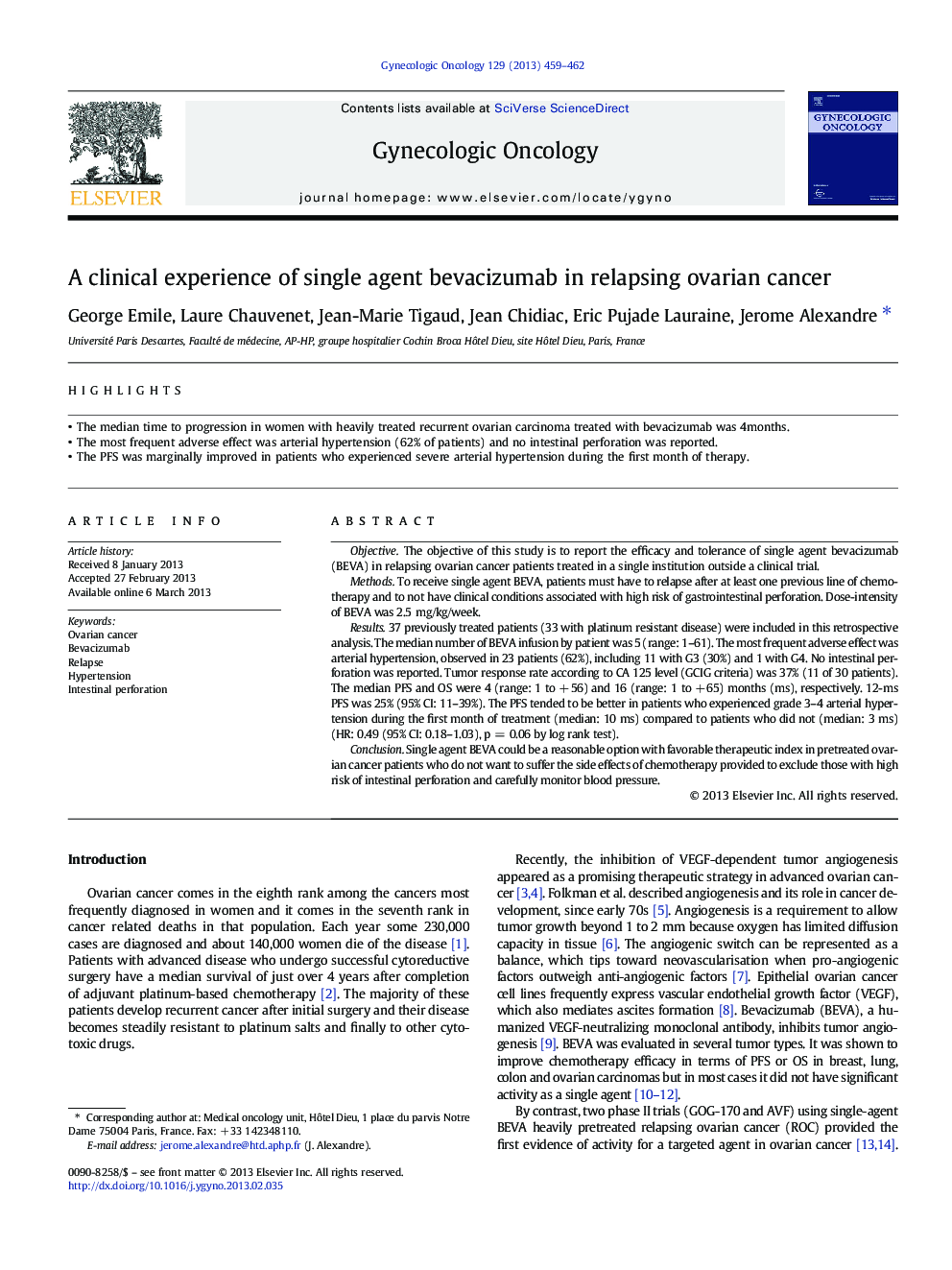| Article ID | Journal | Published Year | Pages | File Type |
|---|---|---|---|---|
| 6185780 | Gynecologic Oncology | 2013 | 4 Pages |
â¢The median time to progression in women with heavily treated recurrent ovarian carcinoma treated with bevacizumab was 4 months.â¢The most frequent adverse effect was arterial hypertension (62% of patients) and no intestinal perforation was reported.â¢The PFS was marginally improved in patients who experienced severe arterial hypertension during the first month of therapy.
ObjectiveThe objective of this study is to report the efficacy and tolerance of single agent bevacizumab (BEVA) in relapsing ovarian cancer patients treated in a single institution outside a clinical trial.MethodsTo receive single agent BEVA, patients must have to relapse after at least one previous line of chemotherapy and to not have clinical conditions associated with high risk of gastrointestinal perforation. Dose-intensity of BEVA was 2.5 mg/kg/week.Results37 previously treated patients (33 with platinum resistant disease) were included in this retrospective analysis. The median number of BEVA infusion by patient was 5 (range: 1-61). The most frequent adverse effect was arterial hypertension, observed in 23 patients (62%), including 11 with G3 (30%) and 1 with G4. No intestinal perforation was reported. Tumor response rate according to CA 125 level (GCIG criteria) was 37% (11 of 30 patients). The median PFS and OS were 4 (range: 1 to + 56) and 16 (range: 1 to + 65) months (ms), respectively. 12-ms PFS was 25% (95% CI: 11-39%). The PFS tended to be better in patients who experienced grade 3-4 arterial hypertension during the first month of treatment (median: 10 ms) compared to patients who did not (median: 3 ms) (HR: 0.49 (95% CI: 0.18-1.03), p = 0.06 by log rank test).ConclusionSingle agent BEVA could be a reasonable option with favorable therapeutic index in pretreated ovarian cancer patients who do not want to suffer the side effects of chemotherapy provided to exclude those with high risk of intestinal perforation and carefully monitor blood pressure.
